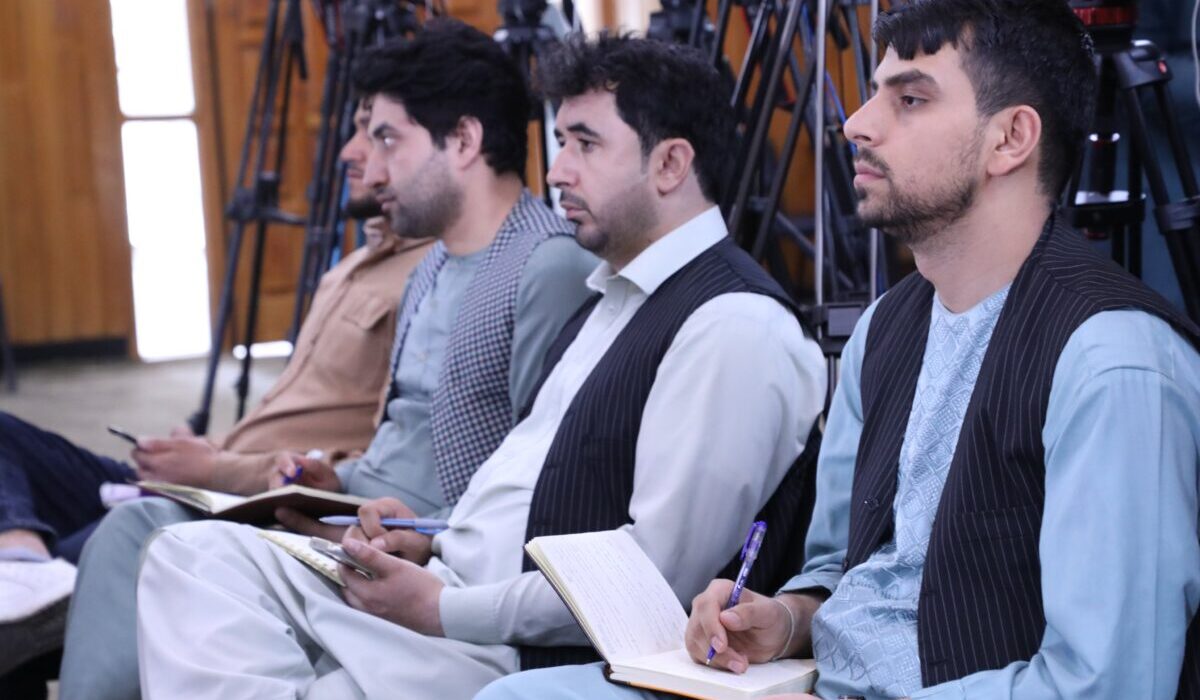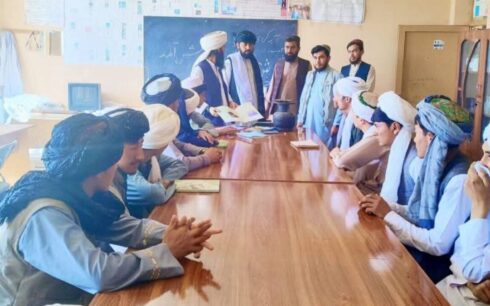KABUL, Afghanistan — A report by the Afghanistan Journalists Center reveals that 181 incidents of media and press freedom violations, including threats and arrests, have been recorded in the third year of Taliban rule in Afghanistan, marking a slight increase from the previous year.
The incidents include 133 cases of threats, the temporary closure of four media outlets for periods ranging from a few hours to several months, and the permanent shutdown of four other outlets, the report says.
Additionally, 48 journalists and media workers were detained, with two still in custody, the report added.
Despite these violations, the report noted one positive development: no targeted attacks against journalists or media outlets were reported during this period.
However, the previous year saw 179 incidents, including the death of one reporter, 20 cases of journalist injuries, 94 threats, 59 detentions, and five instances of physical violence, according to the report.
The report said that in the Taliban’s first year in power, 187 incidents were recorded, including the deaths of two media workers.
The report also highlighted the severe economic challenges facing Afghan media, exacerbated by declining commercial advertisements, reduced support projects, and increasing tax pressures.
Over the past 12 months, many media workers continued to leave the country, a trend that began with the fall of the previous government, the report says.
Many journalists, seeking work or asylum, fled to neighboring countries like Pakistan and Iran. However, living conditions for Afghan migrants in these countries, as well as in Turkey, have worsened over time, the report said.
It added that while a few journalists have been granted asylum in Western countries, many remain in dire financial situations, uncertain about the fate of their asylum applications.
Taliban’s inconsistent media policy
The report provides a detailed comparison of the Taliban’s media policies and actions in their second and third years of power (August 2023 to August 2024).
It reveals that the Taliban’s official stance on media and journalists remained inconsistent and unclear. Senior Taliban spokespersons and officials from the Ministry of Information and Culture repeatedly stated that the media laws from the previous Republic era, which recognized free media and freedom of expression within a defined framework, were still in effect. They also claimed that these laws were compatible with Sharia and the “principles” of the Taliban and would soon be amended with “minor” changes.
However, the report notes that in practice, the Taliban’s deeply conservative and religious views on free speech and independent media continued to dominate. Several high-ranking Taliban officials argued for the need to “reshape” journalists’ perspectives to align with the Taliban’s policies, and to take action against those who defy this approach. The crackdown on press freedoms during the third year of Taliban rule is seen as a direct result of this conservative approach, which has, in many cases, become even more stringent, the report says.
New media directives and censorship
One of the clearest signs of the Taliban’s tightening grip on the media over the past 12 months has been the issuance of new media directives, said the report. While the Taliban claimed that the Republic-era media laws remained in effect, these laws were selectively enforced, particularly in cases where they could be used to lend legal legitimacy to the Taliban’s media oversight bodies, such as the Media Complaints and Violations Commission.
In parallel, Taliban officials issued at least three new media directives, which included guidelines on language use to “preserve national identity,” a ban on photography and videography at official and unofficial events in Kandahar, and a prohibition on radio and television stations in Khost province from accepting phone calls from women, according to the report.
The impact of these directives was felt beyond the provinces where they were issued, with similar restrictions observed in other parts of the country. During their first two years in power, the Taliban had already issued at least 14 media directives, enforcing them with significant pressure on journalists and media outlets, the report shows.
These directives, many of which lack a clear legal basis and contain vague or ambiguous provisions, have imposed a wide range of restrictions on the media. These include bans on women working in national radio and television, coverage of protests and civil demonstrations, the broadcasting of music, the portrayal of women in media, interviews between men and women, the presence of women in dramas and films, interviews with Taliban critics, the airing of international radio and television programs, criticism of Taliban officials, and the broadcasting of women’s voices or phone calls with women in certain provinces, the report says.
“While these directives warn against certain activities, they do not specify the consequences for non-compliance,” the report said. Nevertheless, the Afghanistan Journalists Center’s findings indicate that journalists and media outlets that ignored these directives faced harsh repercussions during the third year of Taliban rule.





